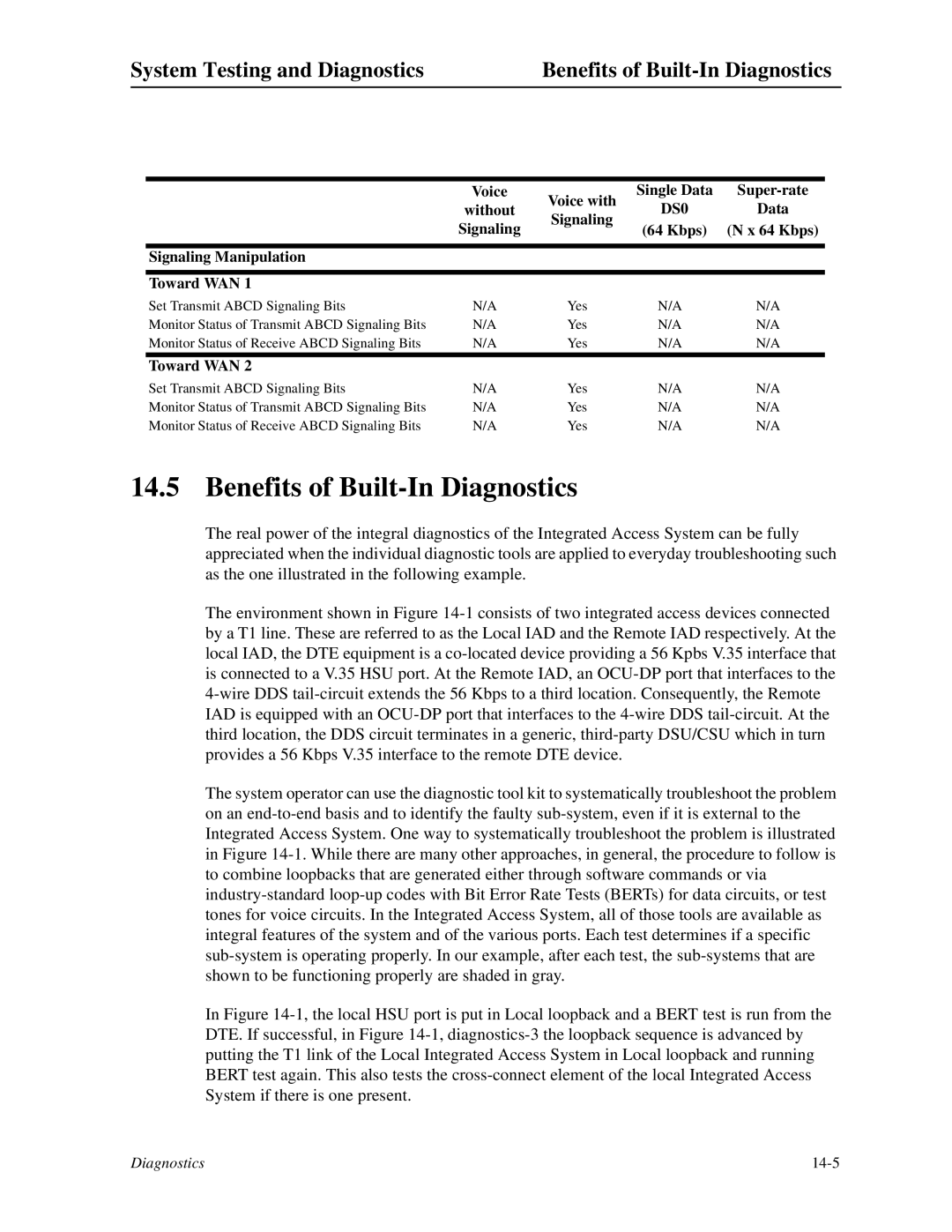System Testing and Diagnostics | Benefits of |
| Voice | Voice with | Single Data | |
| without | DS0 | Data | |
| Signaling | |||
| Signaling | (64 Kbps) | (N x 64 Kbps) | |
|
| |||
|
|
|
|
|
Signaling Manipulation |
|
|
|
|
|
|
|
|
|
Toward WAN 1 |
|
|
|
|
Set Transmit ABCD Signaling Bits | N/A | Yes | N/A | N/A |
Monitor Status of Transmit ABCD Signaling Bits | N/A | Yes | N/A | N/A |
Monitor Status of Receive ABCD Signaling Bits | N/A | Yes | N/A | N/A |
Toward WAN 2 |
|
|
|
|
Set Transmit ABCD Signaling Bits | N/A | Yes | N/A | N/A |
Monitor Status of Transmit ABCD Signaling Bits | N/A | Yes | N/A | N/A |
Monitor Status of Receive ABCD Signaling Bits | N/A | Yes | N/A | N/A |
14.5 Benefits of Built-In Diagnostics
The real power of the integral diagnostics of the Integrated Access System can be fully appreciated when the individual diagnostic tools are applied to everyday troubleshooting such as the one illustrated in the following example.
The environment shown in Figure
The system operator can use the diagnostic tool kit to systematically troubleshoot the problem on an
In Figure
Diagnostics |
